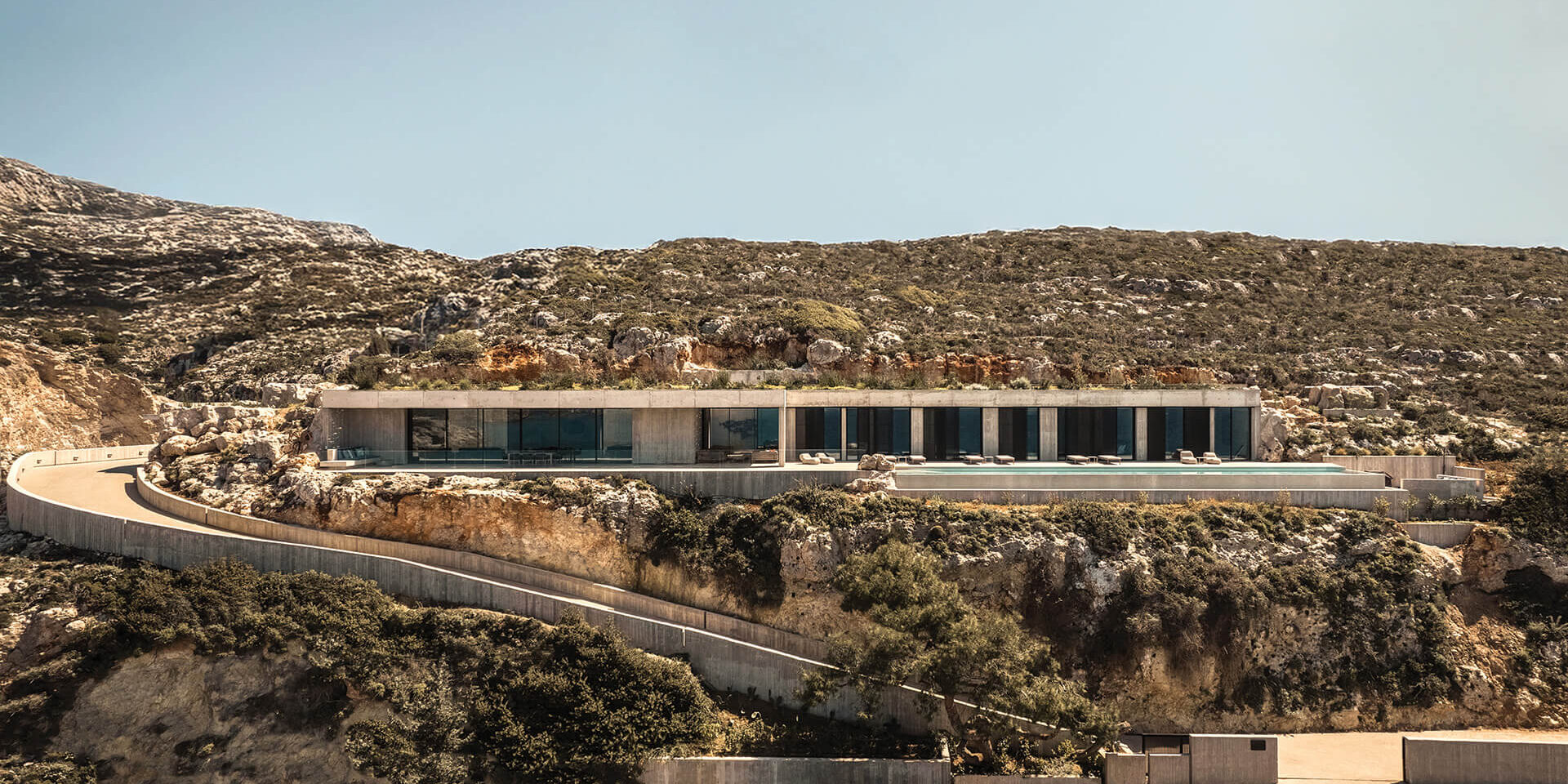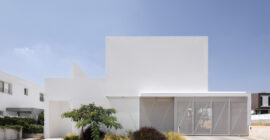Concrete canvas
On a sloping, rocky plot of 4,070m2 with panoramic views towards Kalathas beach, a single family residence was designed with a focus on maximum integration into the landscape. The form of the partially underground building emerged as a conscious response to the character of the natural environment and the desire for minimal alteration of the terrain and its morphology.
Context Integration
The house develops linearly, following the geometry of the plot. It is located on one of the two natural plateaus of the slope, where the incline is gentler. An attempt was made to preserve the existing flora and to incorporate the characteristic tamarisk tree that dominates the entrance at street level. Access is achieved through a crevice in the rock, leading the visitor through a long, uncovered corridor-light well to an entrance hall, which divides the residence into living and sleeping areas.

Functional Layout
From this point, there is a central view of the islet of Kalathas and the window frames fold back to unify the interior and exterior of the residence. The main living space combines the lounge, dining room, and kitchen in an open plan layout, directly connected to the exterior through a large 14m sliding glass door. Five bedrooms with en-suite bathrooms are located in the western wing, along with the vertical connection to the underground auxiliary spaces.

Material Palette
In all, the building’s total area comprises of 36m2 for main functions, 40m2 for parking and reception and 100m2 for underground auxiliary functions. The architecture seeks to converse with the surrounding landscape through the use of exposed materials: bare concrete was chosen as the primary expressive medium, acting as a neutral canvas upon which the artworks of Netherlands-based visual artist Daniella Rubinovitz are displayed.
Combined with the polished concrete mortar flooring and the warm textures of wood and metal, there is a balance between simplicity and material density. The similarity of the concrete and natural ground color tones allows the building to visually integrate into the mountain, while excavated rock fragments were reused in the landscape design. Large openings, the diffusion of light, and the use of natural materials, such as the pergola with a wicker covering, enhance the continuity between interior and exterior spaces. The residence embraces the qualities of the landscape, functioning a discreet backdrop that highlights both nature and art.






